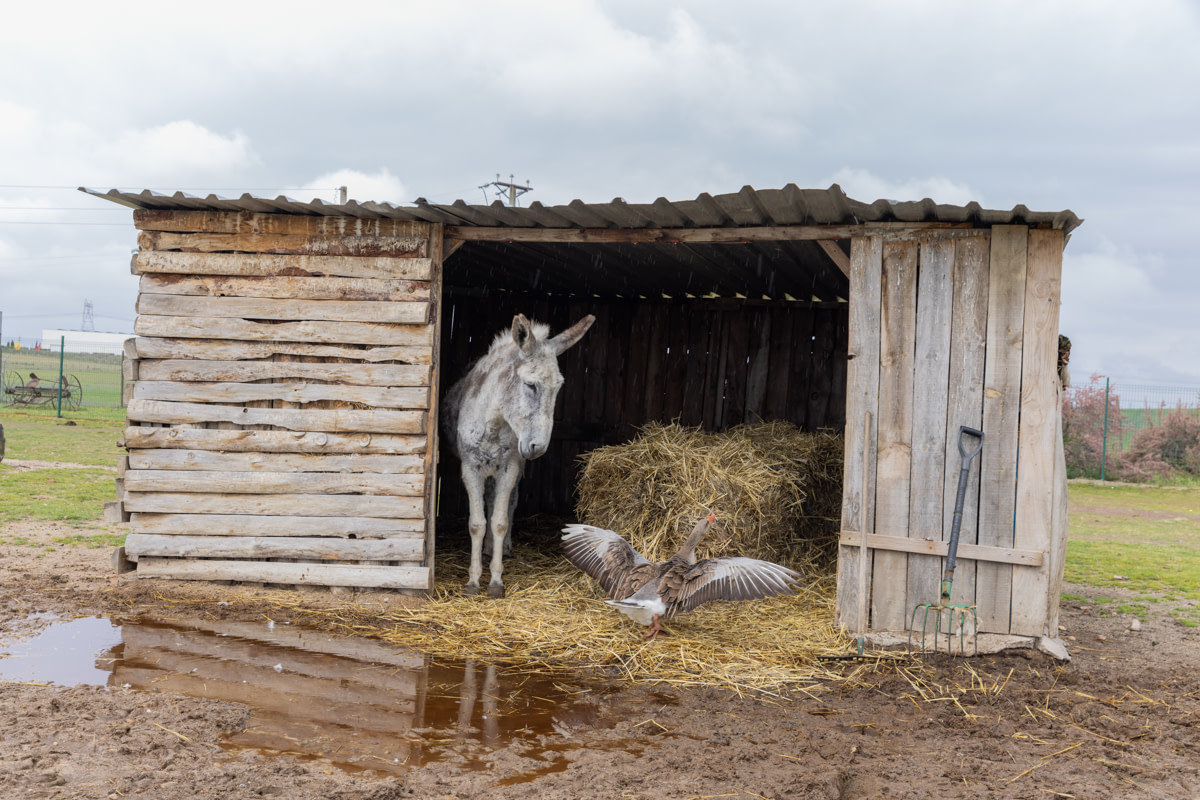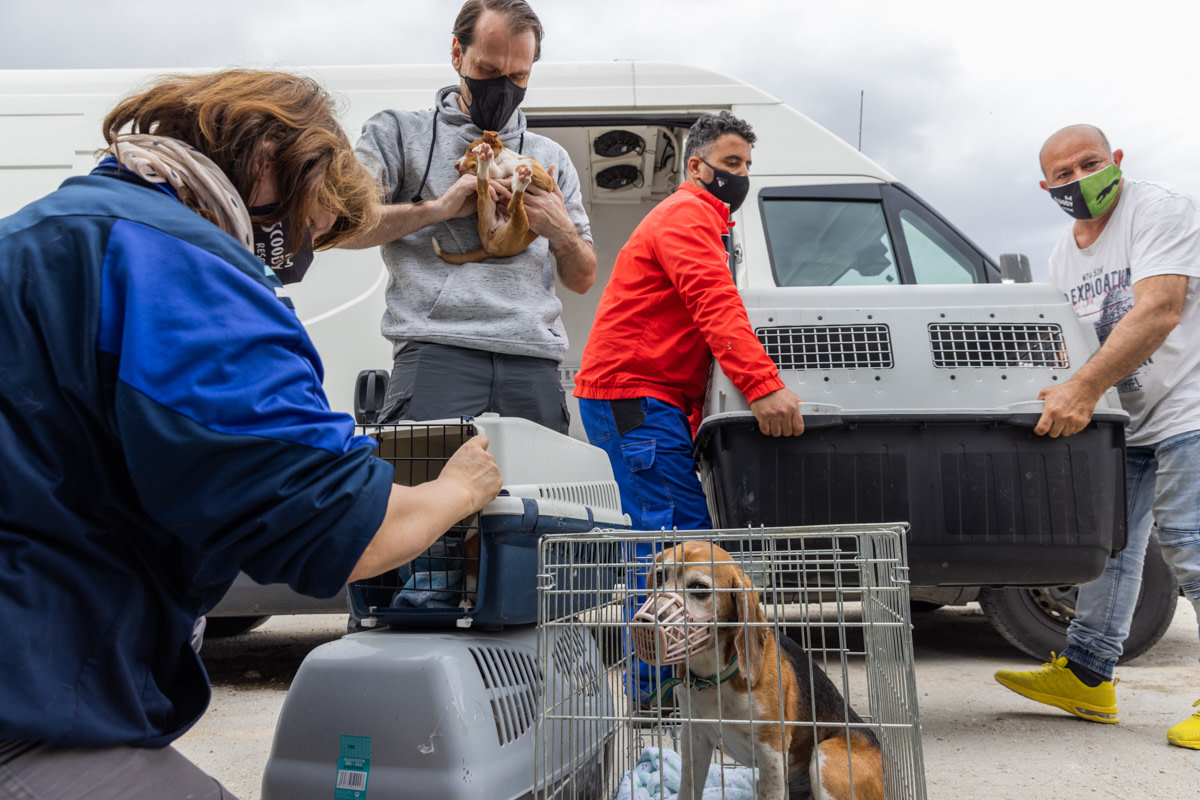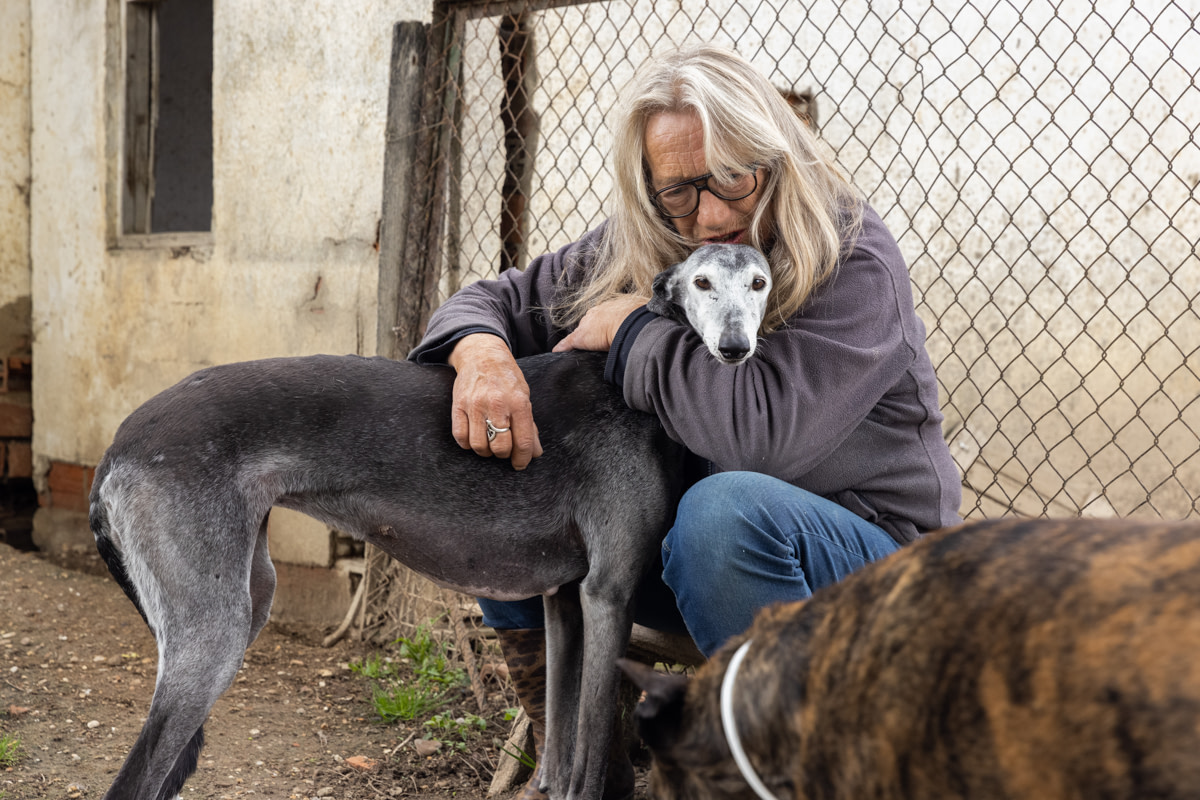Five day old Armonia, at the Gaia sanctuary, was rescued from being sent to the slaughterhouse; she has a fractured tibia and her owners couldn’t take care of a sick sheep. Spain, 2020. Ana Palacios.
We Animals contributor Ana Palacios is a journalist and documentary photographer focused on human rights, shining a light on broken systems in collaboration with NGOs such as Manos Unidas, Trampled Rose and UNICEF. Her work has been awarded, exhibited and published worldwide in National Geographic, The Guardian Weekend Magazine, Al Jazeera, New Internationalist, El País, and more. Ana’s work takes her around the world as a public speaker at universities and photography festivals where she educates and inspires others about the intersection of social issues.
We spoke with Ana to learn more about her compelling work, which includes photography, book, and film projects.
Photographer: Ana Palacios
Animals have been a “late love” for me. I am a journalist, but my professional life has developed for 25 years between the film industry, when I worked as a production coordinator in mostly Hollywood films, and documentary photography linked to human rights.
My love for animals only went as far as my little dog Tiza. It was only in 2020, when I had an assignment to document daily life in several animal sanctuaries, when everything changed for me. I began to look at animals as sentient beings, each one with their own personality and particularities in character. That radically changed the way I understood the world.
Two residents at the Scooby sanctuary share a shelter on a cloudy day. A permanent home to approximately 200 farm animals, all victims of the livestock and entertainment industry or other types of abuse, Scooby provides a safe environment where these animals can live out their lives free from exploitation. Spain, 2021.
Ana Palacios / We Animals
Mar Sánchez, long-term volunteer at Scooby Zamora cuddles Mary, a “potentially dangerous dog” who has been in this shelter for more than four years. Mar explains that these types of dogs are very difficult to find homes for because people are scared of them. As a result, they tend to spend much longer in the shelter. Spain, 2021.
Ana Palacios / We Animals
Is there any particular photograph that you think represents your work and what you’d like to communicate to the world particularly well? Tell us why.
Armonía is the name of this five-day-old lamb. She was going to be euthanized because she had a broken leg. They alerted the Gaia Sanctuary (Spain) and they rescued her, treated her and today take care of her like a daughter. This image, in which she looks at me with a calm gaze, stirs many emotions and represents the focus of my work, which is centered on the intersection between humans and non-humans, that relationship of overwhelming empathy and affection that sanctuaries exude.

Five day old Armonia, at the Gaia sanctuary, was rescued from being sent to the slaughterhouse; she has a fractured tibia and her owners couldn’t take care of a sick sheep. As of October 2020, Gaia has 169 sheep and goats out of a total 534 so-called farm animals. All of them were rescued after being abandoned or seized by the police. Each animal has a name and a sponsor who pays for their food and veterinary expenses. These sanctuaries do not receive any public funds and are financed exclusively through donation made by private donors. Gaia currently has two thousand members, or sponsors, who contribute the money necessary to cover the sanctuary’s overhead expenses, which amount to about €30,000 a month. She will remain on the estate until she dies a natural death like the rest of the animals at this sanctuary. Spain, 2020. Photo: Ana Palacios.
Your most recent photo project Wild Love is about animal sanctuaries in Spain – the people who have devoted their lives to building these spaces, and the individual animals who have found refuge there. Can you tell us more about this project and what inspired it?
It is a long-term project that I want to continue to carry out in other continents (searching for sanctuaries now, so please, reader, feel free to contact me if you are interested). It is so called because wild love is the common denominator that I found in all these spaces. An unconditional surrender of humans to other animals, with patience, respect and an unwavering love. On many occasions I witnessed that these feelings went in both directions and that was a very gratifying surprise. It is that giveaway that I found so inspiring and touching. It is now the focus of my professional interest to continue to explore those places filled with wild love.

Veterinarian Irati Aldanondo performs a routine checkup on Juana together with Coque, the co-founder of Gaia and Olivia a worker at Gaia. Juana is a goat that arrived at the sanctuary with posterior paralysis. A neurological checkup and CT scan revealed that Juana had a mass on one of her vertebrae that was compressing her spinal canal. Last August, she had surgery to have the mass removed and decompress the spinal cord. The mass turned out to be an abscess and was almost completely removed. Now it’s just a question of seeing how Juana evolves and whether she will regain some mobility. The prognosis isn’t very good, but the founders of this sanctuary fight to defend the health of its non-human inhabitants as if their own health were at stake. Spain, 2020. Photo: Ana Palacios

At Gaia, every four months, the sanctuary’s staff deworms all the birds at the sanctuary (ducks, geese, chickens, and turkeys). To do so, the staff treat each bird individually, applying a spray under each wing to free the birds of fleas, lice, etc., and giving each bird a few drops of syrup (Fembendazole), depending on the animal’s weight, to get rid of internal parasites. Veterinary protocols and routines are meticulously observed at the sanctuary. Spain, 2020. Photo: Ana Palacios
Your photo project Fragile Amazon highlights the challenges facing one of the world’s most exploited ecosystems and the human rights violations associated with its indigenous peoples. Can you tell us more about this work and your experience documenting this important story?
When I documented the challenges in the tri-border area of Brazil, Peru and Colombia, I thought it was “only” about the plundering of indigenous communities’ lands for extractive industries and the harassment and cornering of these communities. However, the problem is much greater. The environmental consequences of land violations have cross-cutting effects on all the inhabitants of the earth.
The intensive livestock industry contributes to the deforestation of the Amazon by converting portions of it into intensive crop monocultures for animal consumption. This industry directly harms the health of the planet and all of us on it because it directly affects the reduction of rainfall, the increase in temperature that melts glaciers, the promotion of natural disasters and, therefore, the gradual destruction of the earth. The same with massive fishing and the discharge of toxins into the rivers as a result of the extractive industry in the area, harming the conditions of water quality and marine ecosystems and inevitably extending to humans as well.

The painter Santiago Yahuarcani shows his work “The Amazon Jungle is Dying”. Caballococha, Department of Amazonas, Peru, 2019. Photo: Ana Palacios
What do you enjoy most about your work? What do you find most challenging?
What motivates me most in my work is to think that maybe what I am doing can improve someone’s life, that making injustices visible can call citizens to action. My biggest challenge… to achieve it.
Claire Aubert, general coordinator at Scooby, checks each of the 50 dogs that just arrived, rescued from the Andalucía region 500km away. While they are being unloaded, Claire decides where each animal will be housed in the Scooby facilities depending on age, gender, and breed. The protocol is very clear for the workers and has to be done very quickly for the welfare of the animals who are stressed after so many hours of transportation. Spain, 2021.
Ana Palacios / We Animals
How much creativity can you as a photographer bring to a scene? You’re reporting as a journalist, but how much are you also trying to include your perspective as an eye-witness, as well as your own creative expression?
I try to intervene in the scene as little as possible. To go unnoticed as much as I can, and to be purely documentary. Although I not only limit myself to this photojournalistic form of documenting, I also do posed portraits that complement the strictly documentary work.
If you could issue an invitation to other photographers/filmmakers to take up animal photojournalism, what would you say?
I would say it will change your life and your perspective of understanding the world nowadays.
If you could issue an invitation to the media to include the work of animal photojournalists, what would you say?
Animals are an important topic to discuss, as lately we are seeing how their rights are being claimed all over the world, how the violations of their rights are unknown, the lethal consequences for the soil of the intensive livestock industry and how important it is to take care of them for a healthy and sustainable environment.

Photojournalist Ana Palacios with her exhibition “Armonia” in Zaragoza, which explores life in animal sanctuaries, spaces dedicated to the protection and care of animals rescued, mostly from the intensive livestock industry. Photo: EFE/Javier Cebollada
Where can people view your work?
Right now I have an exhibition about animal sanctuaries in the Círculo de Bellas Artes of Madrid and another exhibition in Barcelona on the Ukrainian refugees in Spain. My documentary film on slave children can be watched via Filmin, and my books on social issues can be purchased on my website.
Get in touch with Ana Palacios and follow her work:
Photographer: Ana Palacios
A selection of Ana’s animal sanctuary images are available via our stock collection.





